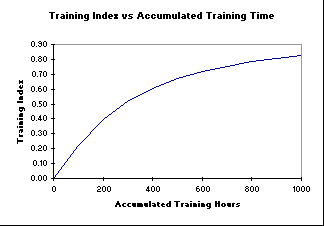Management must decide how much time each worker spends on training. This training includes specific on-the-job skills training, cross training so that different plant can be operated, and external training in areas such as quality methods, teamwork and supervisor skills.
Training has a number of significant impacts. Training may decrease capacity directly as workers direct their time into it instead of production. However training increases the skill level of workers and through the increased effectiveness of improvement groups can actually increase the level of overall capacity. Application of knowledge in quality methods can reduce the number of defects produced and cross training may also contribute towards reducing factory lead time.
However for every worker-hour specified in the decision, $30 will be spent on paying for outside trainers and training materials.
Having employees spend about 50 hours in the year on training says that they spend 2.5% of their time on training (since the total working time is 40hrs/week x 50 weeks/yr ). A cost of $1,500/year/employee would be incurred for external trainers and training materials in this case. In this industry this is sufficient training for them to slightly improve their skills, knowledge and effectiveness from what is currently around 50% of potential.

Hiring a significant number of new staff will probably lower the average skill level and lower quality of output. So training may need to be increased until the new workers reach the previous skill levels.